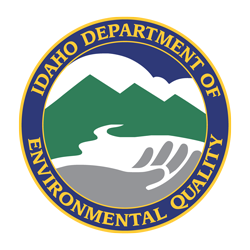August 27, 2021
COEUR D’ALENE — The Coeur d’Alene Lake Advisory Committee (CLAC) convened for the first time Thursday to examine strategies for reducing phosphorus pollution in North Idaho’s iconic water body.
The meeting came on the heels of Governor Little’s announcement last week, which directed $2 million to fund shovel-ready projects that will reduce the flow of nutrients into the lake. The committee will be tasked with prioritizing proposals submitted by the community and recommending projects for funding to the Idaho Department of Environmental Quality Director.
“My goal is to make sure that Idaho is a place that kids and grandkids want to stay and obviously the quality of the lake is a big part of that, not only the lake but its tributaries,” said Governor Brad Little in his opening remarks to the committee.
The first meeting provided an overview of the biological, chemical, and physical features of Coeur d’Alene Lake, the role that increased phosphorus has played in the declining health of the lake, and the different runoff mitigation practices that could help reduce the flow of pollutants.
DEQ estimates that approximately 180 tons of phosphorus enter the lake on average each year. While point source pollution from wastewater treatment plants and other systems is an issue in the Basin, these facilities are typically regulated and treat contaminated water through biological and chemical processes. A second important source of pollution is non-point sources, or pollution that flows across the land surface. When runoff flows over hard surfaces such as roadways, parking lots, and cleared land and into nearby water bodies, it carries pollutants with it.
“Small changes can have a large influence,” said Craig Cooper, DEQ’s limnologist, “when you make even small changes to how well water soaks into the ground, you increase the amount of runoff dramatically.”
Stormwater management techniques such as retention ponds, rain gardens, and other best management practices allow pollutants to percolate rather than discharge directly into surface waters and can greatly reduce the amount of phosphorus flowing into the lake.
“If you start honing in on individual sources, most will reduce relatively small amounts per year but there are a lot of them,” Cooper said.
The committee will hold an open solicitation to review project submissions later this year and DEQ staff will provide technical support to committee members and applicants, including calculating the estimated phosphorus reductions associated with each proposal.
Priority will be given to proposals that are ready to implement quickly and that provide the largest reductions in phosphorus loading to Coeur d’Alene Lake.
The next meeting is scheduled for October 20, 2021.
Staff Contact
Dan McCracken
Regional Administrator, Coeur d’Alene
Dan.McCracken@deq.idaho.gov

